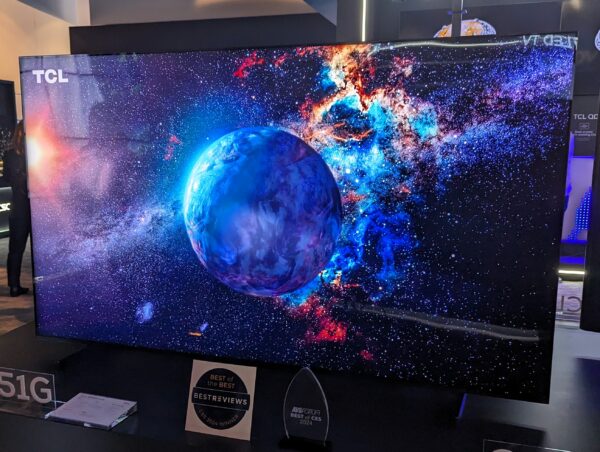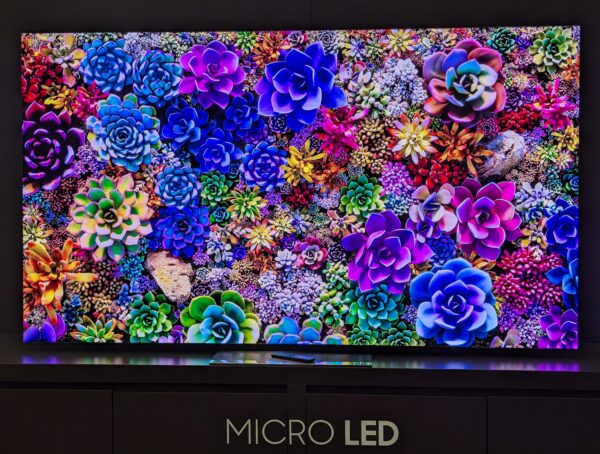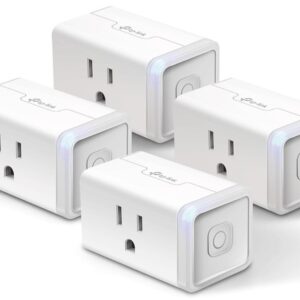Where 2024 Display Tech is headed
By Robert Heron
The new year brings another CES (Consumer Electronics Show) and a grand preview of what we can expect from display manufacturers in 2024. The primary display trend I witnessed at the show was a widespread, albeit mostly incremental, increase in specs. 2024 Display Tech will bring us more (and more affordable) display options with larger screens, brighter luminance levels, and increasingly saturated color palettes.
8K Processing
Interestingly, 8K display resolution generated few headlines and fewer new products at CES. 8K resolution is coming to some home theater projectors, and a few returning flagship LCD TVs will feature this 33+ million pixel screen resolution. Most 8K presentations at the show were related to the improved capabilities of video processors that will drive the latest Ultra HD display devices and the rest of 2024 display tech. The most effective video processors have been machine-trained on (many) thousands of hours of content and sometimes blur the lines between being faithful to the artistic intent and video picture enhancement.

[PICTURE 00: Hisense 8K UST projector. Image by Robert Heron.]

LCD’s Endgame
LCD TV manufacturers know they cannot compete with OLED’s perfect black levels and infinite contrast and have difficulties matching its well-saturated color palette. To compensate for this, 2024 LCD TVs are focusing on providing the brightest pictures yet seen. Several manufacturers claimed this year’s upper-tier models will reach 3000-5000 nits of peak brightness through mini-LED backlighting systems. One manufacturer claimed its giant 2024 flagship LCD TV will achieve HDR’s 10000 nit spec with 40000 local dimming zones.
[https://en.wikipedia.org/wiki/Candela_per_square_metre]


A likely factor of this brightness push in consumer televisions is the recent introduction of the 4000 nit Sony BVM-HX3110 professional master monitor. The HX3110’s dual-LCD layer design gives content creators a readily available option for accurately crafting wide color gamut HDR video at peak luminance levels that exceed the majority of televisions currently available.
[https://pro.sony/ue_US/products/broadcastpromonitors/bvm-hx3110]

OLED PHOLED
It may seem improbable that OLED TVs will ever depict material authored at 4000 nits without using tone mapping. Still, OLED panel manufacturers claim that the best 2024 designs can reach 3000 nits, with hints of 4000 nits peak brightness in 2025. Remember that display panel manufacturers like Samsung Display and LG Display provide display modules to various companies that build the products that make it to consumers (e.g., Sony Electronics, Samsung Electronics, and LG Electronics). These consumer device manufacturers will likely limit the peak brightness of an OLED display to less than the panel maker’s claims to increase panel longevity or to achieve a specific power consumption target.
[https://en.wikipedia.org/wiki/Tone_mapping]
One factor in increasing OLED efficiency is transitioning from a blue fluorescent emitter to a blue phosphorescent OLED (PHOLED) emitter. Phosphorescent chemistry enables the OLED material to convert more of the consumed electrical current into usable light instead of waste heat that accelerates panel degradation. Red and green OLED emitters transitioned to phosphorescence years ago, and it took quite a bit longer for chemists to perfect the recipe for blue. We’ll likely see these new blue emitters reach consumer products in 2025.
[https://spectrum.ieee.org/blue-pholed]
MicroLED 2024 Display Tech – Back to the Future
Over a decade has passed since Sony wowed CES attendees by demonstrating a 55-inch 1080p MicroLED display capable of 400 nits of brightness and perfect contrast. Today, companies are showing MicroLED TVs with screen sizes exceeding 110 inches that claim 5000 nits of light output and pixels that will last 100000 hours without risk of burn-in. MicroLED was the most impressive eye candy on the show floor, but it comes with a hefty price tag in the 5 to 6-figure range. The ability to quickly evaluate, bin, blend, and accurately place the millions of LEDs that make up a MicroLED display highlights the difficulty in mass manufacturing these essentially bespoke video devices.
[https://www.sony.com/en/SonyInfo/News/Press/201201/12-005E/]

Quantum Dot Electroluminescence (QDEL)
The tiny semiconductor crystals known as quantum dots (QD) are a cornerstone of improving color in flat panel displays. The quantum dots used in today’s LCD TVs (often branded as QLED and ULED) and QD-OLED displays developed by Samsung efficiently convert a high-frequency/high-energy blue light source into lower-frequency reds and greens – a process described as photo-emissive or photoluminescence.
[https://en.wikipedia.org/wiki/Photoluminescence]
Sharp Electronics demonstrated the next generation of QD display technology at CES 2024: quantum dot electroluminescence (QDEL). A QDEL display converts electrical current directly into visible light using an inorganic material (quantum dots) that should be less prone to degradation over time than today’s OLED formulas. Sharp’s private CES demonstration included a 12-inch QDEL monitor displaying motion video and a prototype 30-inch monitor. While Sharp’s demo was the most advanced form of QDEL we’ve seen, it will be a couple of more years before it competes with the brightest and most colorful display technologies we have today.
[https://www.digitaltrends.com/home-theater/sharp-qdel-tv-ces-2024/]
Artful TVs
Samsung’s The Frame series of televisions was not the first to bring artwork to a consumer display device. However, the company’s efforts proved extremely popular, so it’s no surprise that most TV makers had their art-ready offerings prominently featured in their booths at CES. For 2024, Samsung’s latest iteration of The Frame features an “Art Mode” validated by Pantone. It further improves its depiction of artistic creations with a room light sensor that adjusts the display’s “brightness and hues to optimize the image for ambient lighting conditions.” A technical demo provided by Samsung showed The Frame responding to changing room lighting conditions, including color temperature, and the TV responding within seconds to maintain an accurate visual representation. A nearby Pantone color sample chart and color evaluation lightbox highlighted how closely the 2024 The Frame matched the real-world effects of lighting quality on our perception of color. The Frame did an admirable job of showing how the artwork would look if placed in the room you are standing.
[https://www.samsung.com/us/tvs/the-frame/highlights/]

Robert is a technologist with over 20 years of experience testing and evaluating consumer electronics devices, primarily focusing on commercial and home theater equipment.
Robert's expertise as an audio-visual professional derives from testing and reviewing hundreds of related products, managing a successful AV test lab, and maintaining continuous education and certifications through organizations such as CEDIA, the Imaging Science Foundation (ISF), and THX.
More recently, Robert has specialized in analyzing audio and video display systems, offering comprehensive feedback, and implementing corrective measures per industry standards. He aims to deliver an experience that reflects the artists' intent and provides coworkers and the public with clear, insightful product information.










